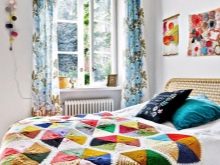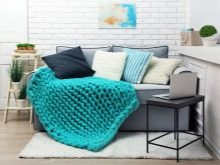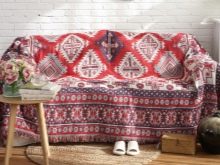Features of blankets and bedspreads
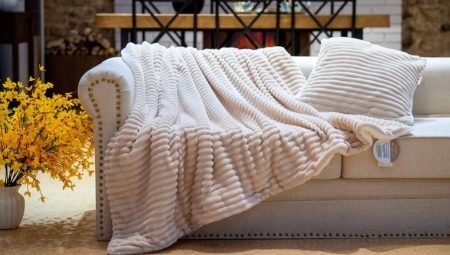
Plaid is a type of textiles that are in demand as capes and bedspreads. They are placed on sofas, armchairs, beds, and are also used on hikes and trips to heat and retain heat. In the children's block, blankets can be an addition to a rocking chair or replace a carpet for games.
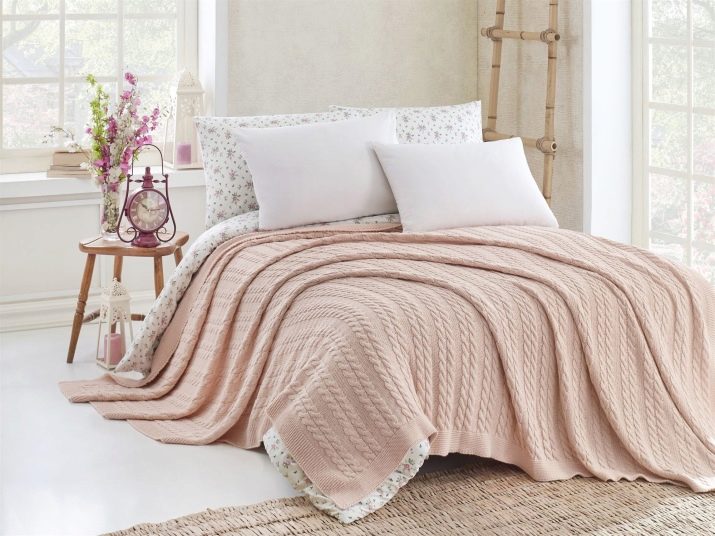
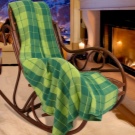
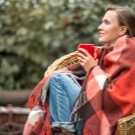
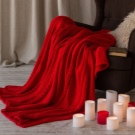

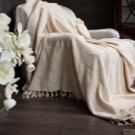
What it is?
Once upon a time, the word "plaid" meant a cape made of woolen checkered fabric, used as a cloak. Over time, the scope of these products has expanded. Nowadays, a blanket is, first of all, bedding that can be used in different ways.
- Blanket Is a skin-friendly, soft and cozy product that keeps you warm.
- Furniture cover for sofa or bed - protects the bed from dirt, and also decorates the room interior.
- Cape - optimal when meeting with friends outdoors, watching movies near the fireplace or near the TV. By the way, in Western countries, in the evening, many cafeterias and restaurants offer their visitors warm capes.
- Litter - relevant for outdoor picnics. The whole family can comfortably fit on one blanket.
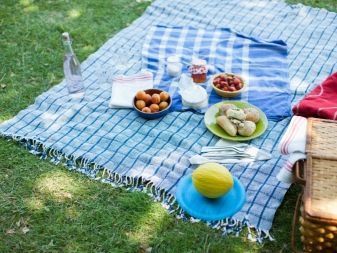
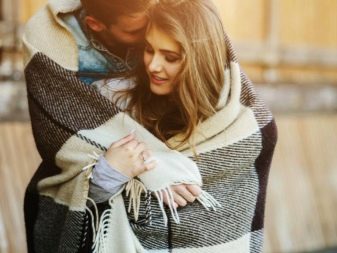
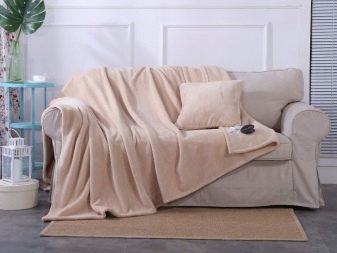
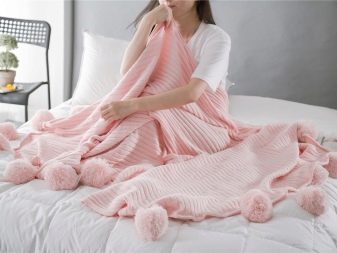
History
A warm blanket creates a unique cozy atmosphere; it warms a person in cool autumn and frosty winter. Wrapped in a blanket, a person feels comfort and seems to be mentally transported into warm summer evenings.
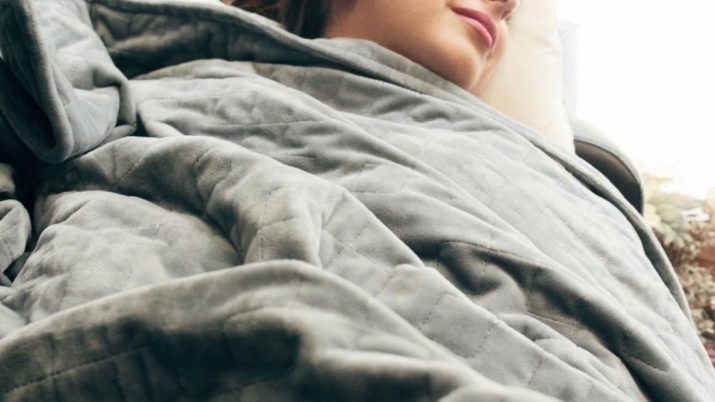
Plaids were invented in Scotland several centuries ago, where they were used as outerwear for local shepherds.This accessory helped them to protect themselves from bad weather, and was also used as a cape during their holidays.
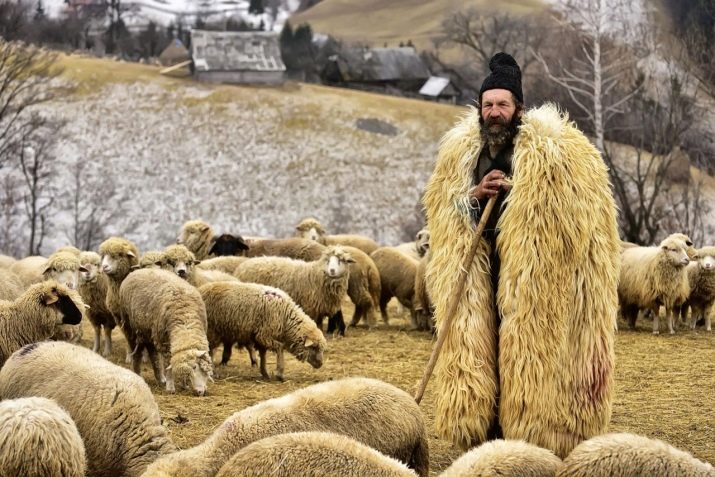
Plaids at that time were made mainly of checkered fabric in national ornaments; they had a mandatory fringe. Each clan living in Scotland had capes with a unique pattern that was not repeated in any other products. From such drawings it was possible to determine where the owner of the thing came from, and to which family he belongs.
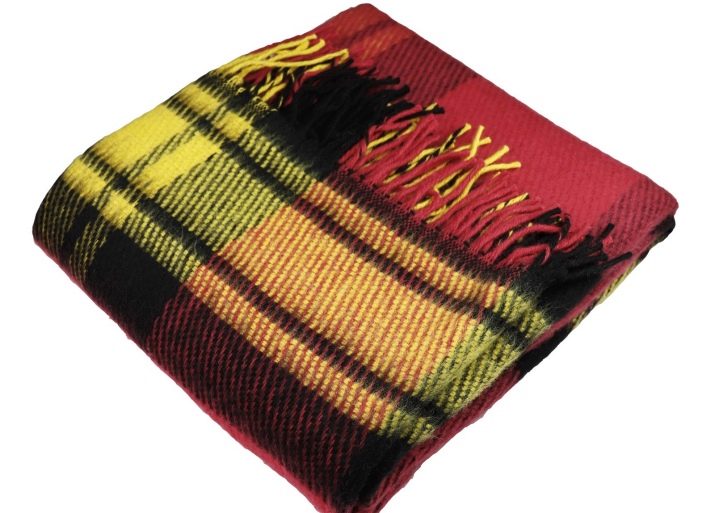
Such a decision was especially relevant during battles and battles, since it allowed them to distinguish their supporters from the enemy.
The colors were bright, most often the following combinations were used:
- black and yellow;
- white with bright red;
- green and white.
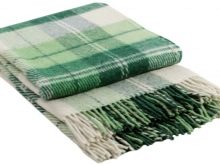
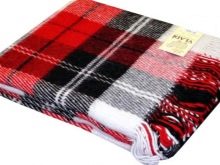
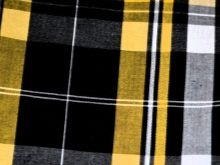
Capes belonging to noble people from the royal family could include up to 7 shades, commoners were allowed to use no more than 4.
The very first blankets were made from sheep's wool. They were dyed using the tartan technique, a sequence of shades was applied to a specialized instrument through which the fabric was driven. This ancient device has been passed down from generation to generation by the Scots for many centuries. This state of affairs continued until 1746, when, after the suppression of the Jacobist uprising, the British banned the Scots from using clothes with national ornaments. Only 3 Scottish clans were able to keep the classic colors, today the unique technology of painting the canvas has been lost.
In the last century, rugs have again come into use. True, their functionality and appearance have undergone significant changes during this time. Modern blankets are presented in a wide variety of materials, colors and textures.
Views
There are a large number of blankets, they can be thick or thin, single or double-sided. Their drawings consist of squares, stripes, geometric shapes, images of flowers, animals and cartoon characters. Depending on the size of the bedspread, there may be:
- for adults;
- for kids;
- for teenagers.
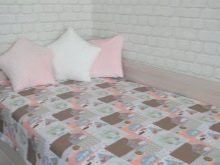
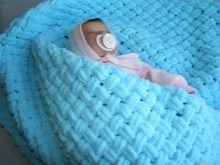
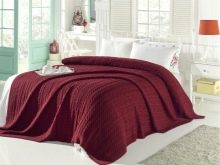
Taking into account production technology they are:
- woven;
- made from a single piece of fabric;
- from lostkuts;
- related.
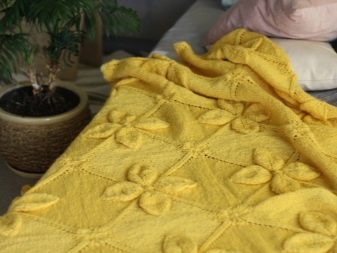

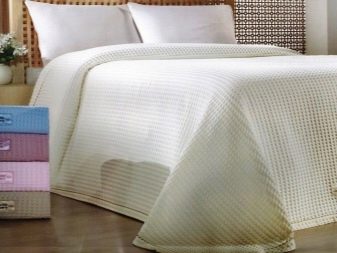
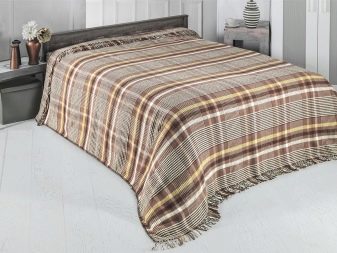
Materials (edit)
These days, capes and bedspreads are made from a wide variety of materials. They are conventionally divided into 3 groups: natural, synthetic and combined.
Natural
Cotton
Cotton linen is of natural origin.
Pros:
- environmental Safety;
- hypoallergenic;
- light weight;
- such blankets are skin-friendly.
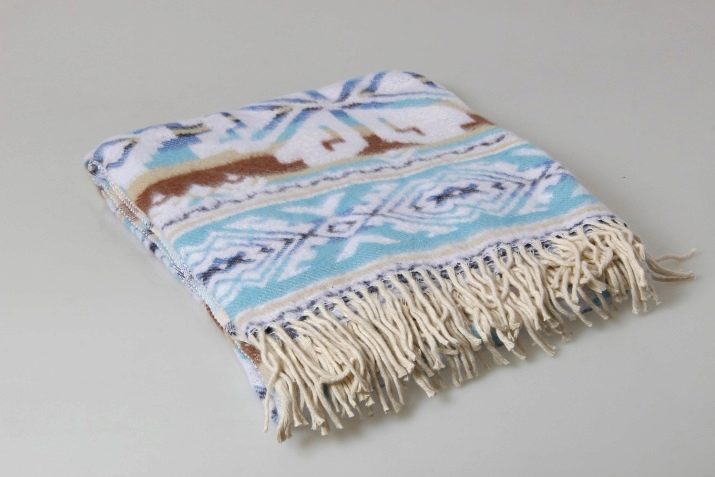
At the same time, cotton products wrinkle quickly, dry for a long time and do not retain heat, therefore they are not suitable for the cold season.
Wool
Wool blankets are warm and beautiful, and in addition, they are healthy. Most often, such bedspreads are made from sheep or camel wool, cashmere is often used.
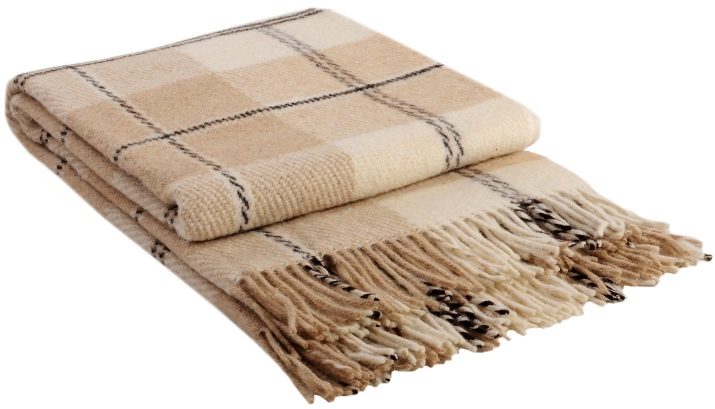
Pros:
- healing properties for colds and pathologies of the musculoskeletal system;
- activate metabolism and blood circulation;
- can absorb moisture, while the bedspread remains dry;
- due to the self-cleaning property, the need to wash woolen blankets is extremely rare;
- products are tactilely pleasant;
- have a long service life.

Minuses:
- can cause allergies;
- some types of wool are rather spiky;
- the palette of colors is limited;
- high price.
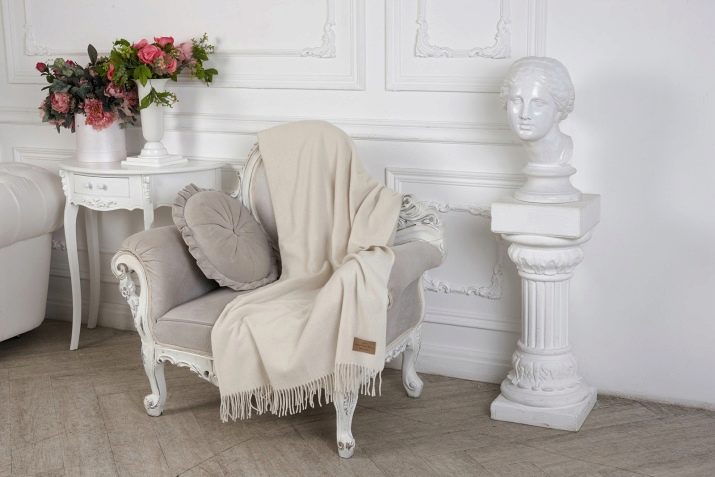
Synthetic
Acrylic
According to their characteristics, acrylic bedspreads resemble woolen bedspreads. They are just as soft and light, but at the same time they are made of polymer fibers.
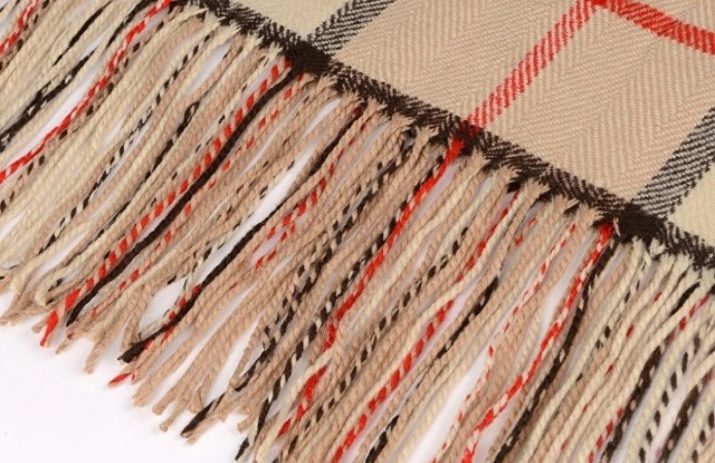
Pros:
- aesthetic design;
- hypoallergenic;
- ease of care;
- ability to retain heat;
- do not accumulate a charge of electricity;
- retain the brightness of colors even after washing;
- affordable price.
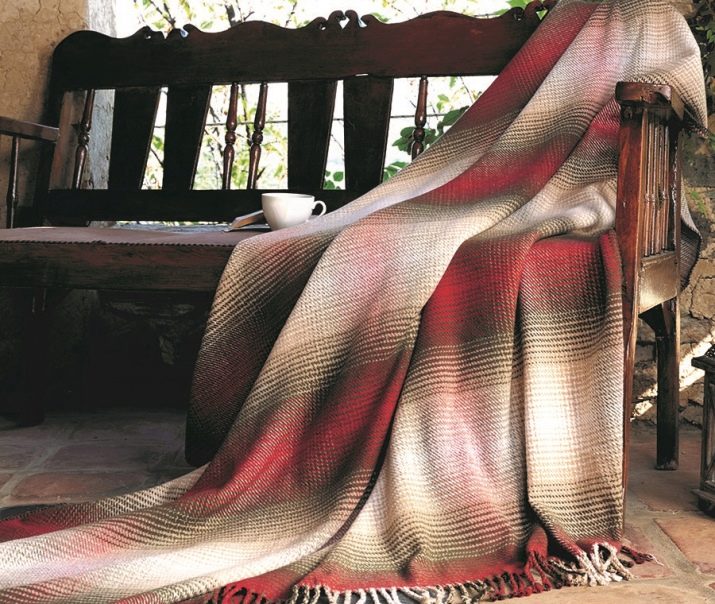
Minuses:
- absorb foreign odors;
- do not allow air to pass through;
- lose their softness under the influence of sunlight;
- quickly become covered with pellets;
- the fabric can absorb stains that are difficult to remove.
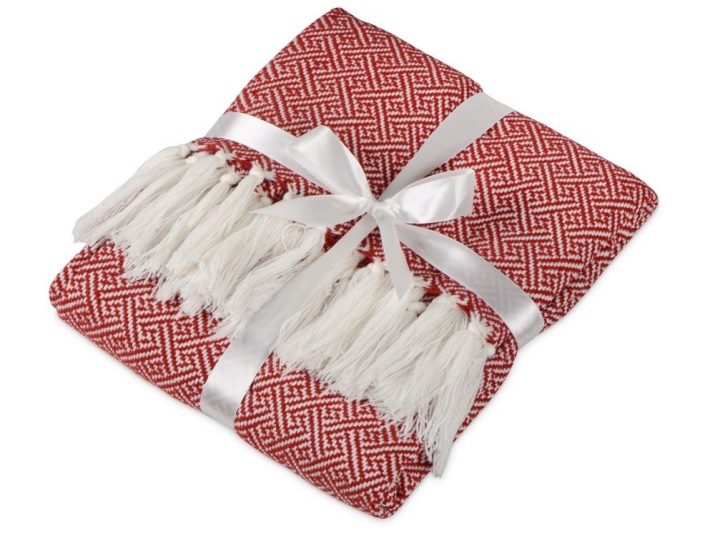
Microfiber
Latest generation modern material made of polyester or polyamide.
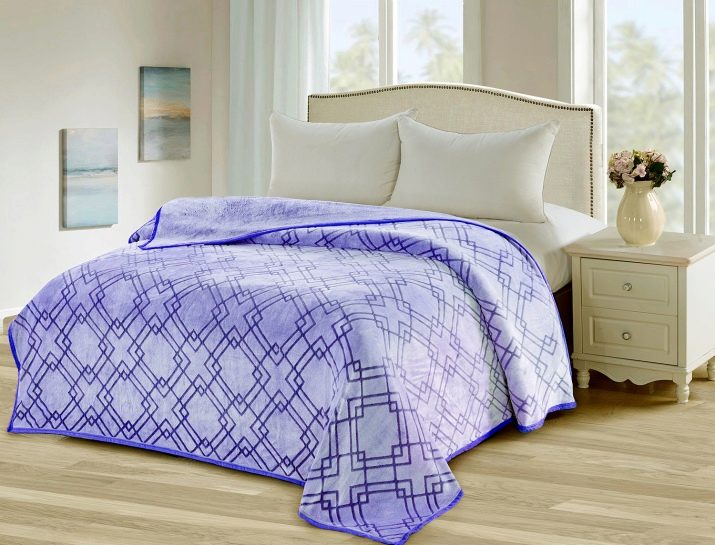
Pros:
- ease of care;
- wear resistance;
- long-term preservation of shades;
- lack of pellets;
- ability to absorb moisture and dry quickly.
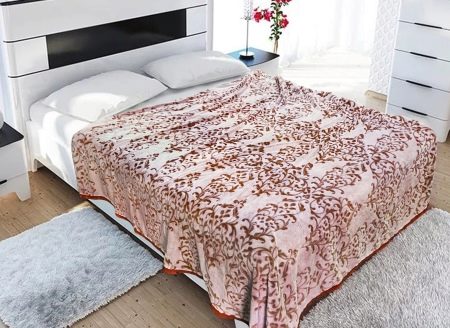
Minuses:
- accumulates electricity;
- deteriorates its appearance when ironing and drying at elevated temperatures.
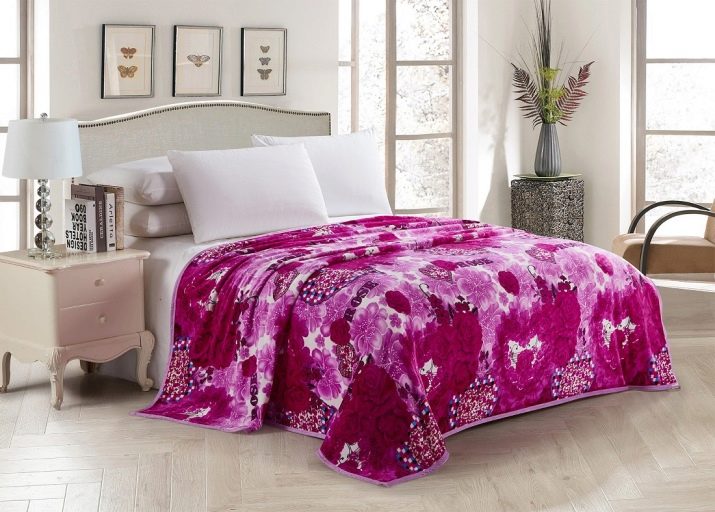
Polyester
This material is made from polyester fibers. The visual characteristics of such blankets largely depend on the fiber processing technique.

Pros:
- tactilely pleasant canvas;
- resistance to stretching and friction;
- high strength;
- light weight;
- ease of cleaning;
- the product does not wrinkle;
- does not absorb odors;
- affordable price.
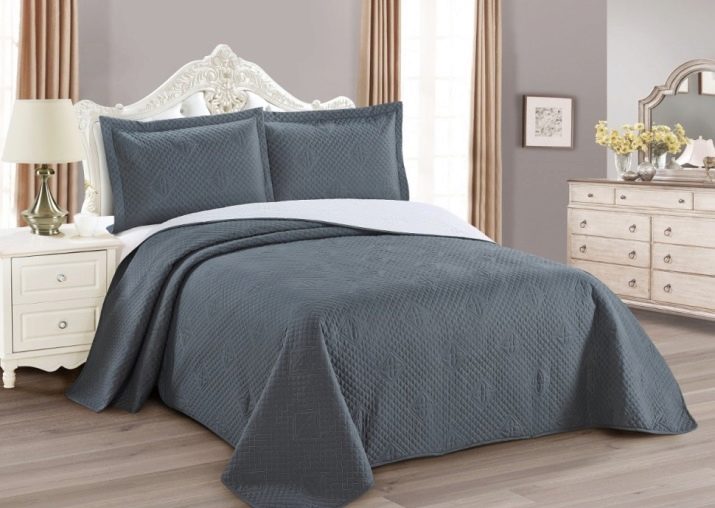
Minuses:
- accumulates an electric charge;
- shrinks in high temperature conditions.
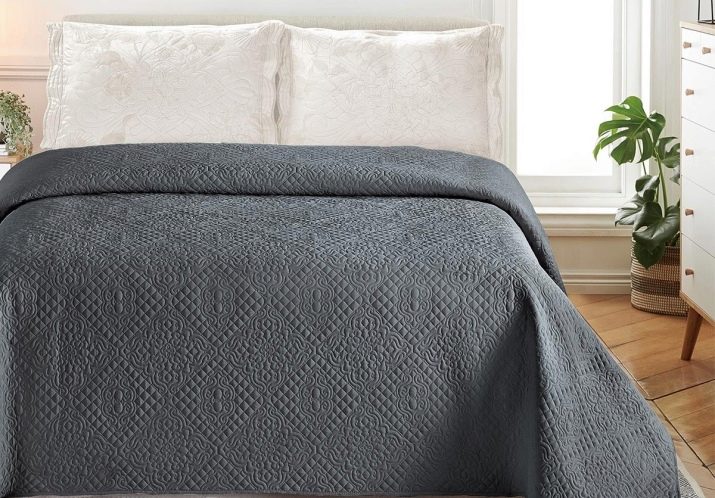
Artificial fur
When creating such blankets, a primed fabric base is used with a synthetic pile attached to it.
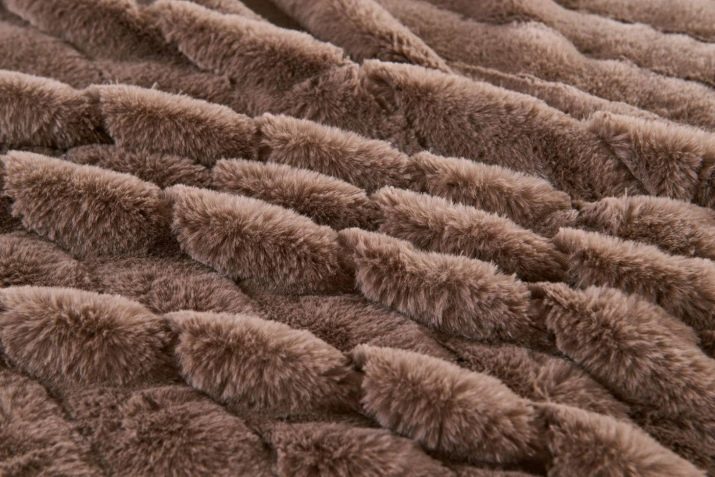
pros:
- wear resistance;
- resistance to moisture;
- excellent heat retention ability;
- a large selection of prints;
- ease of cleaning;
- unattractive to moths.
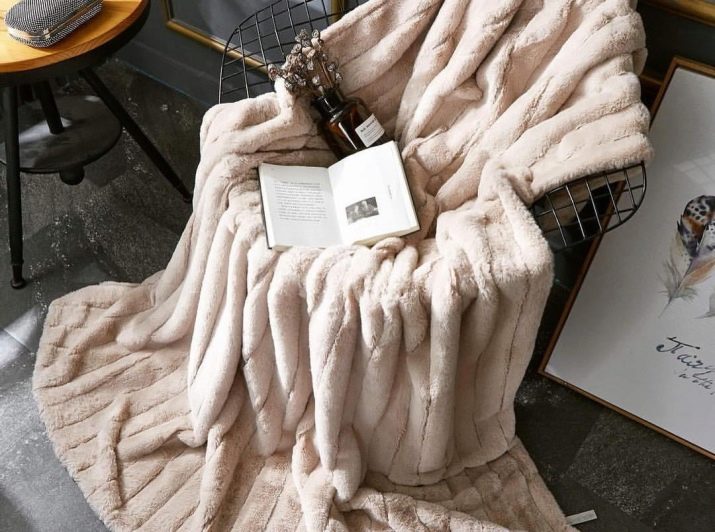
Minuses:
- pellets quickly appear on the surface;
- the fabric attracts dust particles;
- stores electricity.
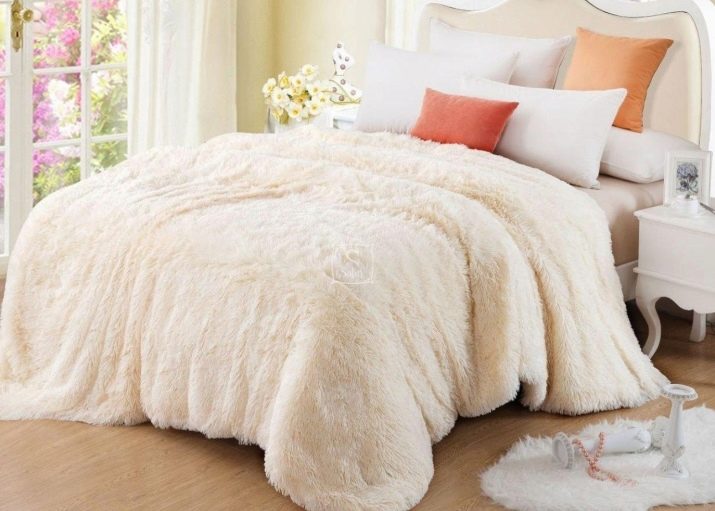
Fleece
Warm, soft and very cozy blankets.

pros:
- resistance to high temperatures;
- the impossibility of the appearance of mold and fungi;
- hypoallergenic;
- ease of care, including ironing and dry cleaning allowed;
- light weight.
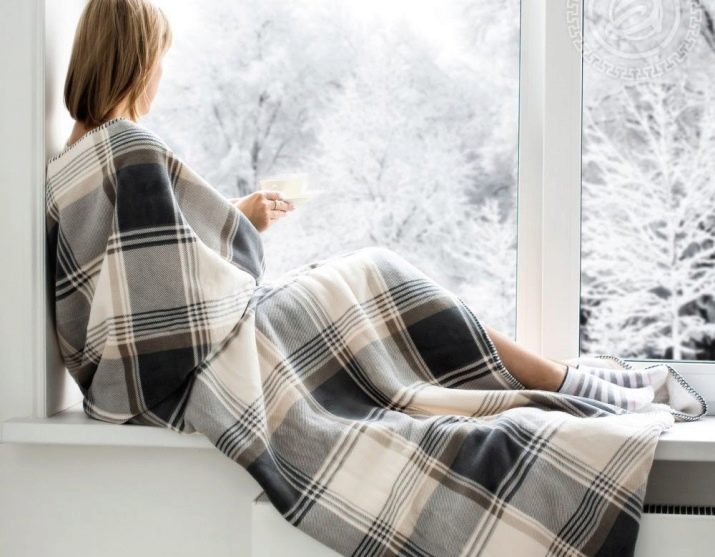
There is only one drawback - over time, a charge of static electricity accumulates inside. To get rid of this trouble, it is necessary to use an antistatic agent.
Combined
Bedspreads made of mixed fabrics are very popular. They are considered the most comfortable and durable. The most in demand are acrylic-viscose and acrylic-cotton models. For a long time these products do not lose their shapes, brightness of colors and heat-retaining characteristics.
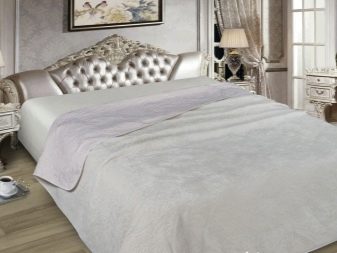
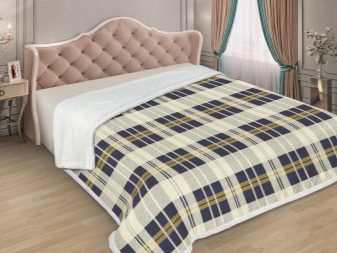
Dimensions (edit)
Depending on the size of the blanket, the scope of its use also varies:
- for large sofas and double beds large models are suitable with dimensions of 180 × 220, 200 × 200, 200 × 220, 220 × 240, as well as 240 × 260 cm;
- for a small sofa blankets 170 × 240 and 130 × 170 cm will be relevant;
- to chair options include products 140 × 200 and 150 × 200 cm;
- for newborns the best choice would be models 75 × 75 or 75 × 90 cm;
- in the crib of babies buy blankets 100 × 120 or 110 × 140 cm;
- for younger students the most widespread are products 130 × 160 and 140 × 200 cm.

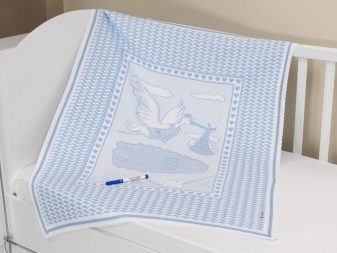
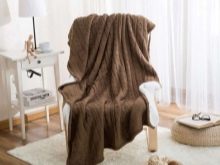
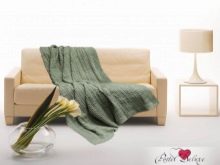
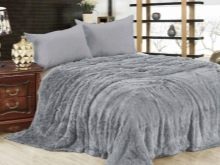
As for the shapes, most often manufacturers offer square and rectangular bedspreads. Children's versions usually have rounded corners. At the same time, most firms produce their own exclusive options.
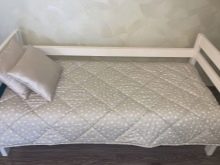
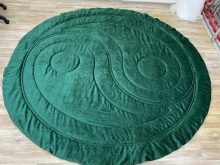
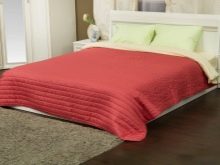
And by agreement between the customer and the manufacturer, it is possible to create blankets of any shape and size.
Design options
Blankets are available in a wide range of designs and colors. That's why for any room, you can always pick up such a blanket so that it not only warms, but also decorates the room, organically fits into its style and design... For example, neutral shades include curry blankets, camel and other natural tones.

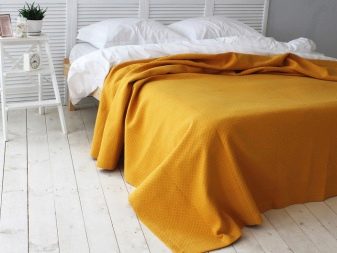
If it is important that individual elements do not catch the eye and do not get out of the general style, creative images, symbols, and patterns will be organic. Shades of earth, sky, wheat are considered a good background for them.
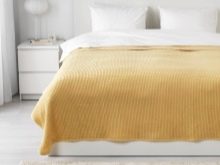
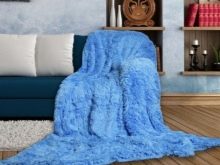
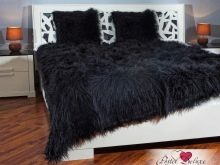
The traditional prints are stripes, checks and polka dots. Such models are relevant for sleeping rooms, in the living room and on the balcony. At the peak of popularity, abstraction and minimalistic geometry. Such a thing will be a harmonious element that perfectly complements the overall design of the room.
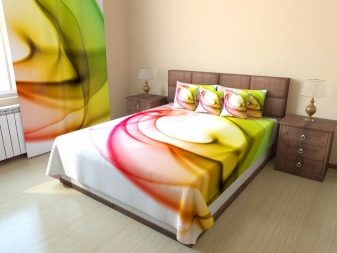
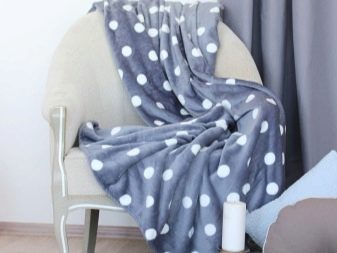

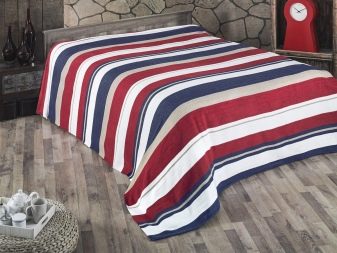
Top manufacturers
The rating of the most popular blanket manufacturers includes the following brands.
- Tango Is a well-known trade brand from China, popular for its high quality and unusual appearance.The bedspreads are made of the most modern materials, they are hypoallergenic and are suitable even for a child's room. Blankets of this brand absorb moisture, but dry quickly. On sale are presented in a variety of bright and rich colors. At the same time, the shades retain their original appearance for a long time.
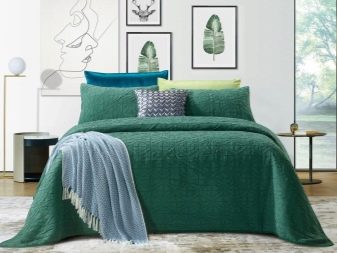
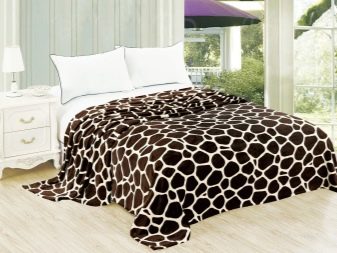
- Paters - the blankets of this company combine new trends and classics of textile fashion. The material for their sewing is pure New Zealand wool. This natural yarn has fine hairs that trap air particles inside the fibers. This structure increases the heat-insulating characteristics of the bedspread, on cold days it is warm and cozy under such a blanket. The most widespread are acrylic models.
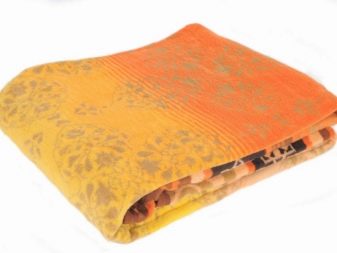
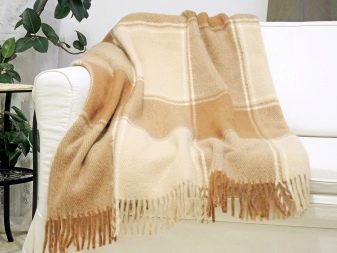
- Arya - a well-known company from Turkey offers blankets that combine high European quality and colorful oriental style. The presented models are made of faux fur and fleece. Most of the designs contain patterns and zigzags, as well as images of flowers, animals and a cage. Models with a marine theme, paintings of megacities and an embossing effect are very popular. Double-sided blankets are produced especially for children. They are made of soft microfiber on the one hand and polyester on the other.

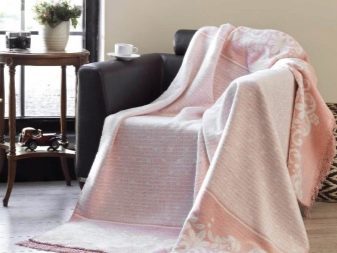
- Biederlack - The German manufacturer offers a wide selection of bedspreads made of warm sheep wool, the most delicate cashmere, lightweight cotton, wear-resistant polyester and hygroscopic acrylic. Synthetic fiber allows you to make blankets in a wide variety of shades, moreover, the colors are bright and retain their original appearance even after numerous washing cycles. Such bedspreads are characterized by high hypoallergenicity, they warm well and, moreover, allow air to circulate freely.
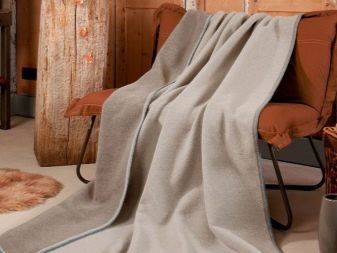
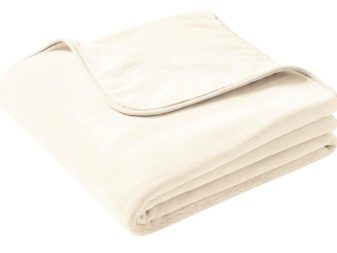
- Kazanova - the products of this brand are recognized as a true standard of quality. It is based on the use of acrylic with the introduction of a natural thread. Supersoft fibers are introduced into the fabric structure, providing maximum coating strength. The bedspread visually resembles velor with an elongated pile. Such blankets do not cause allergies, they do not attract dirt and dust, moreover, they retain the stability of colors even under the influence of direct ultraviolet rays.
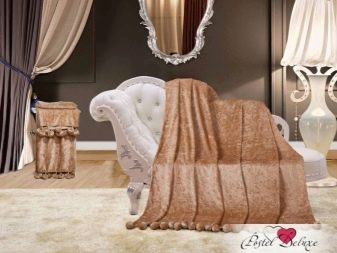
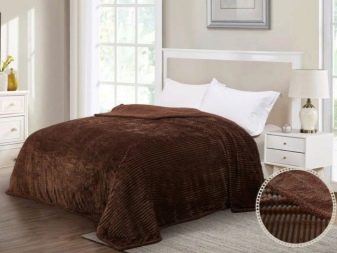
- "Favorite home" - a domestic manufacturer offers fleece bedspreads. They are soft, tactilely pleasant, breathable and warm. Blankets keep their shape for a long time, they do not lose their colors and are not covered with pellets. Traditional designs are geometric as well as abstract patterns. Along with them, plaids are produced in a classic checkered design.
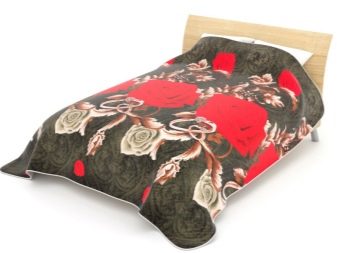
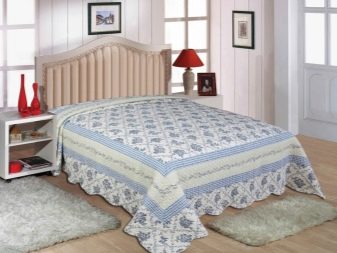
- "Fleece" - a renowned manufacturer of woolen capes. Camel, sheep wool and alpaca wool are used as raw materials, polyester fibers and down are added to them. The products are very warm, cozy, they create a truly homely atmosphere in the home.

- TIM-TEX. The Russian textile company produces various types of blankets, among which the “chinchilla” models made of artificial fur with anti-pilling treatment, which does not allow the fibers to roll off, and gives the product a beautiful shine, are in special demand. The variety of colors is pleasantly surprising. Composition - 100% polyester.
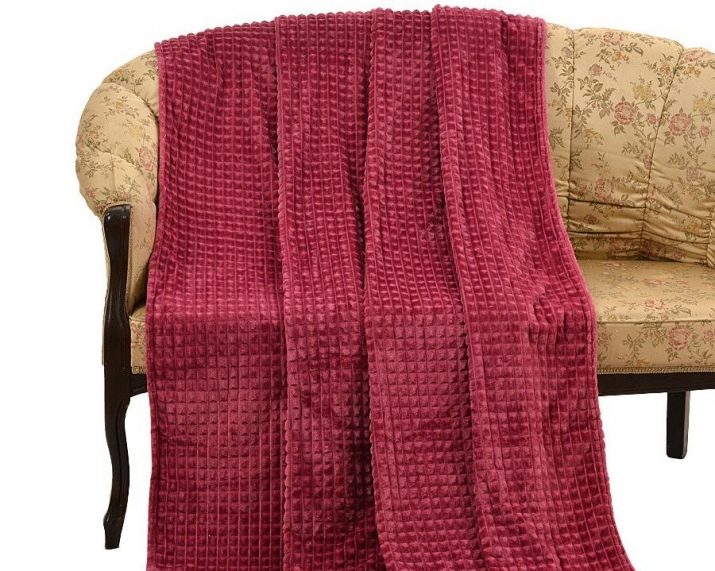
Nuances of choice
When choosing a blanket, first of all, you need to decide on the purpose of buying it.
- If you need it as a bedspread on a sofa or bed, the size and composition should be the main selection criterion.... For example, a blanket in a chair in front of the TV, on which people will often sit, should be resistant to wear and tear; thinner models can be used for bedrooms.
- If you are going to wrap yourself up in a blanket during get-togethers on summer evenings, feel free to choose cotton or wool; linen models are suitable for warm evenings.

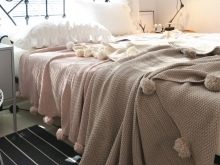
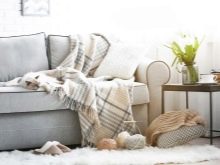
Pay attention to the quality of the product.
- Fold points - if you notice that the pile is sparse on the fold, it is unlikely that the blanket will serve you for a long time.
- Finishing - high quality products are stitched along the edges and trimmed with tape or braid. In this case, the line itself should be even, without elongated loops and protruding threads.
- Surface - it is best to choose smooth products that are uniform and even to the touch.
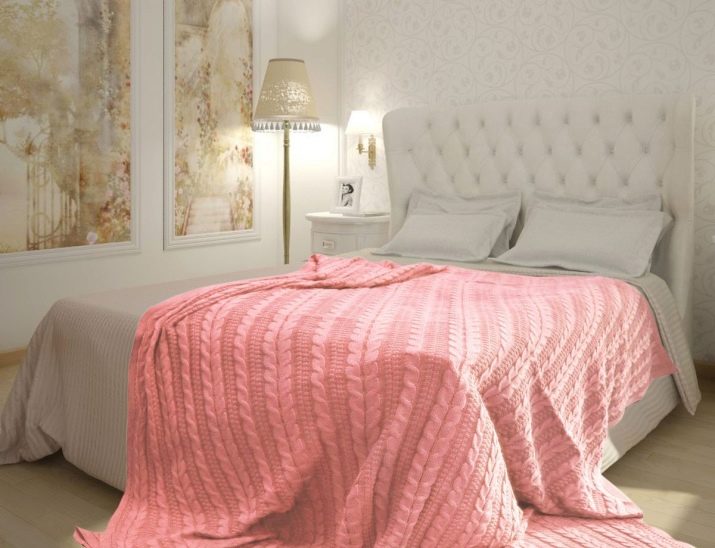
Beautiful examples in the interior
A properly selected blanket becomes a real interior decoration.
- Checkered bedspreads are considered classics of the genre. In this case, the cell can be any: green, blue, black, pink, beige, purple and even turquoise.
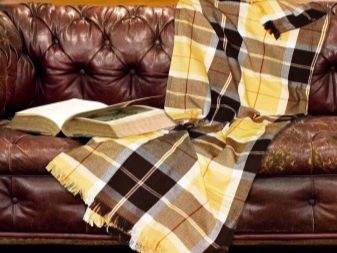
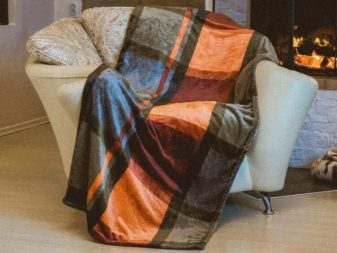
- For children, they buy blankets with characters from their favorite films: Spiderman, Frozen, etc. 3D blankets with anime motives are popular among teenagers.
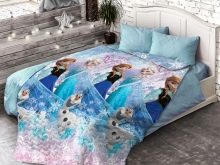

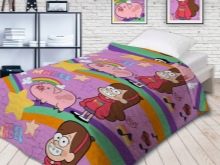
- Children are especially delighted bedspreads glowing in the dark.

- Season trend - a plaid in the form of a mermaid tail.
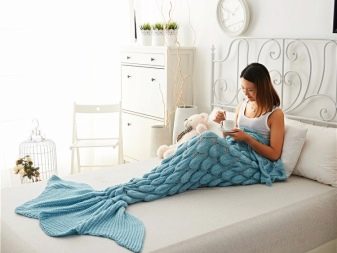

- Blankets can be one- and two-sided, in stores you can find bedspreads in the form of pita bread, with pom-poms and fringes. Bedspreads in an oriental or African style will successfully fit into themed interiors; abstraction is suitable for minimalistic interiors.
